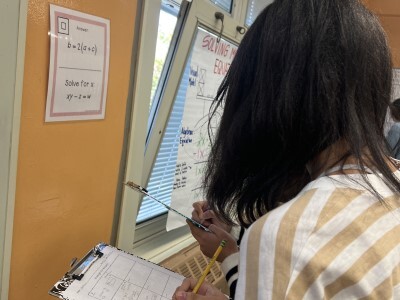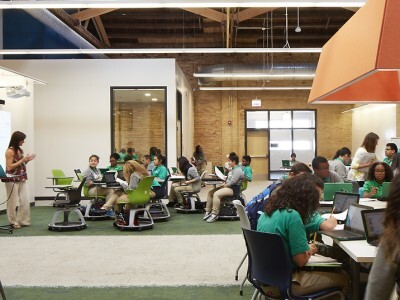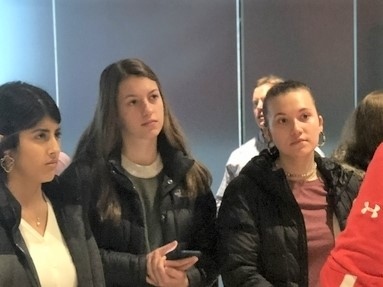How Flexible Learning Spaces Support Every Student
Topics
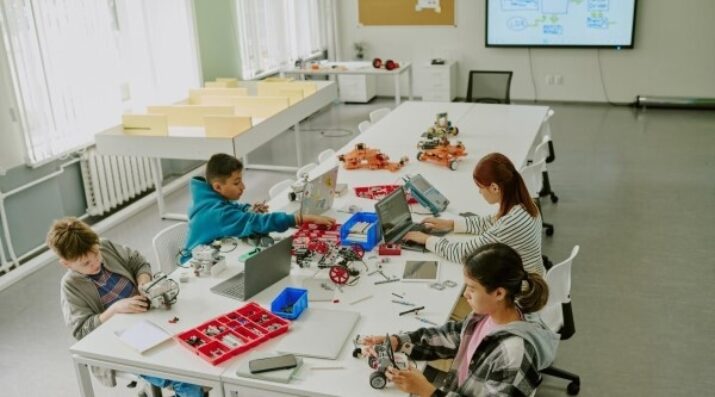
We’ve all had the experience of truly purposeful, authentic learning and know how valuable it is. Educators are taking the best of what we know about learning, student support, effective instruction, and interpersonal skill-building to completely reimagine schools so that students experience that kind of purposeful learning all day, every day.
A flexible physical space allows learning to be personalized and differentiated, dynamically adapting to the diverse needs and talents of each student.
Innovations in teaching and learning have had little impact on modern space planning and school architecture. We know that students and teachers do better when they have variety, flexibility, and comfort in their environment. This series examines how next generation learning spaces impact the learning experience for students and their teachers. If you have the opportunity to design a new school building or renovate an existing building, or if you are interested in using space better in your school, this series can help ensure that the physical spaces in your building promote the skills students need to thrive and contribute to an ever-changing global society.
Versatile learning represents a significant shift in educational practices, focusing on personalization, engagement, and holistic development. It allows students to explore their interests, work collaboratively, and develop skills necessary for the future. By embracing flexibility, technology, and a more inclusive approach, schools can prepare students for success both in and out of the classroom. Versatile learning refers to an approach in education that adapts to the diverse needs, interests, and learning styles of students. In a traditional classroom, one-size-fits-all methods are often employed, but versatile learning emphasizes flexibility, creativity, and personalization. By fostering a dynamic learning environment, schools can engage students in a way that maximizes their potential.
A flexible physical space allows learning to be flexible in the moment as well as over time. Learning is no longer limited to only the classroom, as innovative technology infrastructure makes it possible for any space to become an active learning zone. Design the school with flexibility, both indoors and out, to support active, project-based learning. The versatility promotes and supports sociological and technological equity where innovative learning is fully accessible to all. These qualities create learning environments that support every student and enable each of them to succeed and thrive.
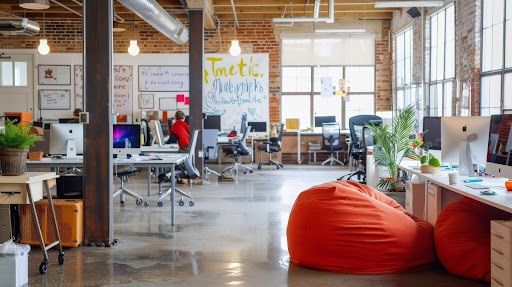
Credit: AI-generated by loginovvados on Freepik.
Versatile learning spaces are resilient, anticipating that the curriculum will change. To the greatest extent possible, these learning environments are not program-specific. Walls that separate areas are studs and abuse-resistant gypsum wall board that can be reconfigured and are not load-bearing walls. The infrastructure (power, data, heating, cooling, etc.) is adaptable for future needs. Also, furniture is on wheels for flexible mobility. Furthermore, the building can accommodate future additions, with more student capacity in mind.
Key Elements of Versatile Learning
Differentiated Instruction: Teachers tailor lessons to accommodate students' different learning styles, abilities, and interests. This could involve offering visual, auditory, and kinesthetic learning opportunities or modifying the complexity of tasks to match individual needs.
Technology Integration: Modern educational tools and resources like tablets, online platforms, and interactive software allow students to engage with material in multiple ways. With technology, students can progress at their own pace, access a variety of resources, and collaborate in innovative ways.
Active Project-Based Learning (APBL): APBL encourages students to solve real-world problems through hands-on projects, enhancing critical thinking, creativity, and collaboration. Students are given the autonomy to choose their approach and the resources they need, leading to a deeper understanding of the material.
Cross-Disciplinary Approaches: Versatile learning often involves integrating subjects, like math with art or science with history. This holistic approach encourages students to make connections between different fields, helping them see the real-world applications of their learning.
Social and Emotional Learning (SEL): Versatile learning also emphasizes emotional intelligence and interpersonal skills. Schools that focus on SEL help students develop empathy, resilience, and effective communication, which are key to their overall growth.
Student-Centered Learning: The shift from teacher-led to student-driven learning empowers individuals to take responsibility for their education. Students are encouraged to explore topics that interest them, ask questions, and engage in discussions, fostering a sense of ownership over their learning journey.

Credit: pkproject on Freepik
Benefits of Versatile Learning
Engagement and Motivation: Students are more likely to be engaged in their studies when they can approach learning in ways that suit them best. This leads to increased enthusiasm for schoolwork and a greater desire to learn.
Critical Thinking: A versatile learning environment challenges students to think critically and problem-solve in various contexts. They are often tasked with finding creative solutions to complex issues, honing their analytical skills.
Inclusivity: By addressing different learning styles and needs, versatile learning creates a more inclusive environment for all students, including those with special needs, English language learners, or those who require extra support.
Preparedness for the Future: In today’s rapidly changing world, students need to be adaptable. Versatile learning prepares them to think on their feet, embrace new technologies, and develop skills that are essential for success in the modern workforce.
Considerations for Versatile Learning
While versatile learning offers many advantages, its implementation can present challenges. Teachers must be adequately trained to differentiate instruction and manage a range of learning needs. Schools may also face resource constraints, especially when it comes to technology integration and providing personalized learning experiences. Additionally, some students may initially struggle with the autonomy that comes with student-centered approaches, and they may need guidance in developing self-regulation and time-management skills.
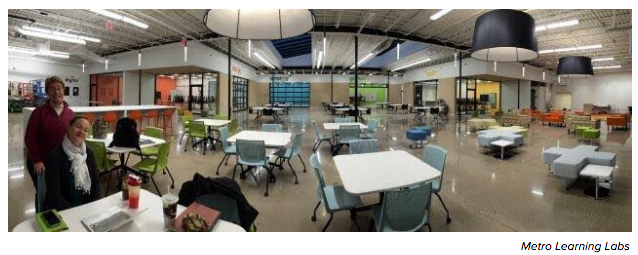
Features of this versatile learning space include student self-directed learning, transparency for learning on display, technology promotes student choice, touch-down + power-up. Credit: Metro Schools in Columbus, Ohio
Learn More
See the whole series about next gen learning spaces.
Photo at top by Anna Tolipova on Freepik


